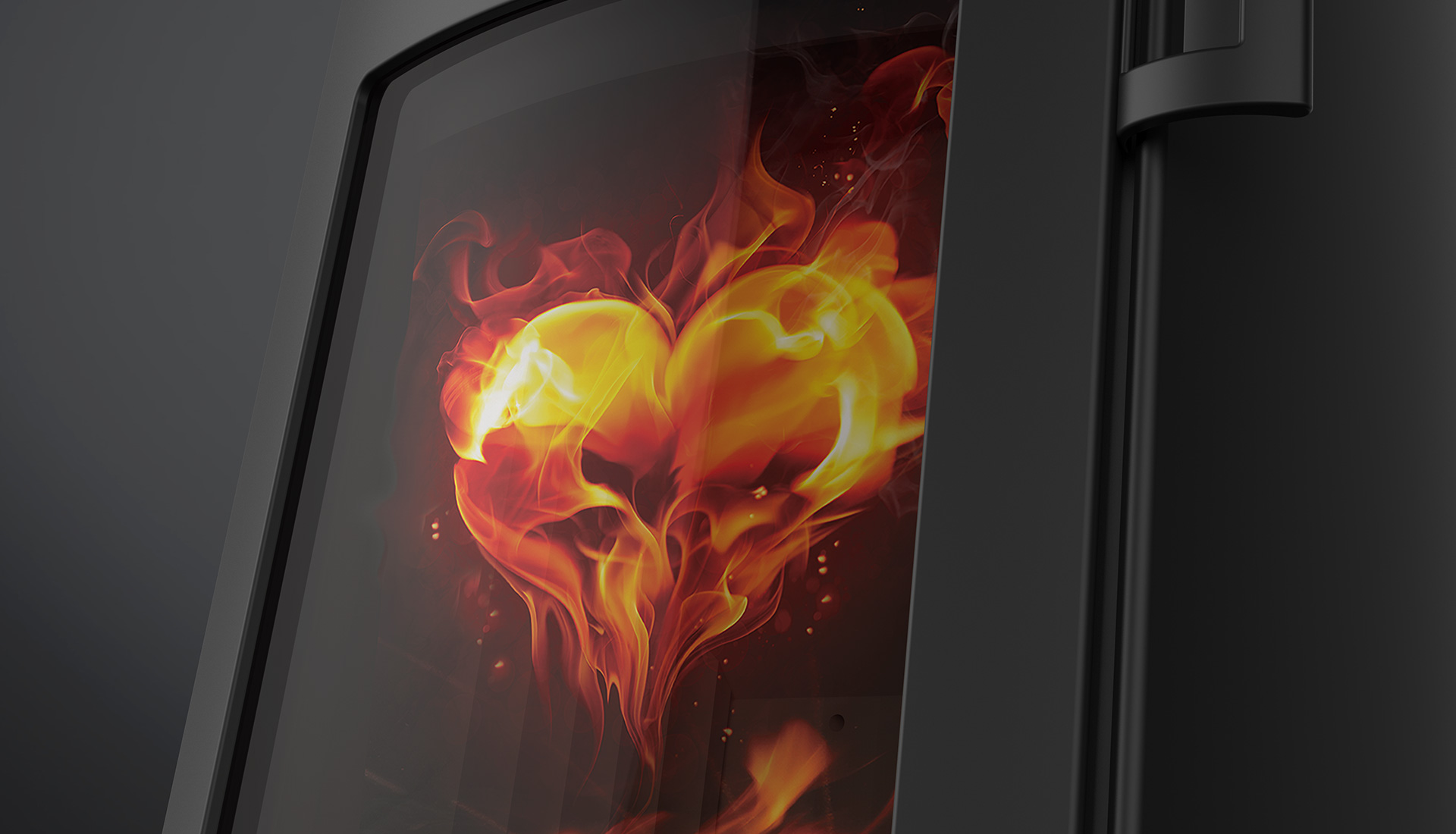Spend Time in front of the fire Instead of cleaning
- In general, stoves do not require much cleaning.
Regular cleaning and maintenance
To ensure a stable operation of the stove, the combustion chamber must be regularly cleaned. The combustion chamber and the ash drawer (if present) must be emptied of ash as required. Use a special ash vacuum cleaner or a small hand shovel. Ash from the stove may contain embers long after the fire has gone out; therefore, it is important always to use a fireproof container for disposal of the ash. The Danish Environmental Protection Agency recommends that you dispose of the ash with the household waste, but we recommend that you check your local regulations.
If your stove is equipped with a riddling grate, you can empty the ash into the ash drawer by moving the handle back and forth. Never empty the combustion chamber completely of ash; you get the best combustion with a small layer of ash left in the combustion chamber.
The outer surface of the stove can be maintained by brushing it with a soft, long-haired car brush or by using a vacuum cleaner with a brush head.
It is also important to note that the stoves are treated with a heat-resistant paint that does not withstand water. Therefore, all maintenance both inside and outside must be done without the use of water.
Annual cleaning and maintenance
At least once a year (more often with frequent use of the stove), check all gaskets and lubricate all moving parts with heat-resistant grease intended for the purpose.
Cleaning of smoke ducts and chimney: you can do this once a year when the heating season is over. Clean the smoke ducts by carefully removing the top plate in the combustion chamber, the smoke deflector plate and the smoke limitation plate (steel plate). It is important to handle these carefully. The smoke deflector plate can be removed by lifting it up on one side, after which it can be released on the other and lowered into the combustion chamber and finally out of the door. Put it back by tilting it up on one side, then on the other side and finally putting it back in place in the middle.
Minor stains or scratches in the paint can be repaired with Senotherm spray. Major damage can be polished with fine steel wool, vacuumed and then sprayed with Senotherm spray (this should be done when the stove is cold; follow the instructions on the spray can).
The stone cladding on the outside of the stove (if fitted) can be cleaned with a hard-wrung cloth with a little ordinary detergent. If necessary, you can use regular acetone or thinner. To remove larger stains, you can easily “polish” the stone with the rough side of a pot sponge (synthetic).
Cleaning the glass pane can easily be done by dipping a damp cloth in cold ash from the stove and rubbing it on the sooty glass. You can also find cleaning products developed for the purpose in DIY stores. Very stubborn stains or coatings can be removed using fine steel wool.
Always use original spare parts
Gaskets should be changed regularly, as it is essential for good combustion and a clean window for the gaskets in the stove to be tight. Although the gaskets look okay, they can collapse in the heat and lose the ability to keep the stove tight.
The grate / bottom may, in very rare cases, crack after use and can also be easily replaced. Lift the grate out and replace it with a new one. The bottom itself, in which the grate is located, is also easy to replace, as it lies loose in the stove.
The combustion chamber lining will wear over time and may break. To prevent the plates from breaking, it is important that you do not throw the firewood into the stove, but place it carefully in the middle of the combustion chamber. The material must be replaced when the plates have a thickness of approx. 1.5-2.0 cm at the latest. Small cracks do not affect the function of the stove.


